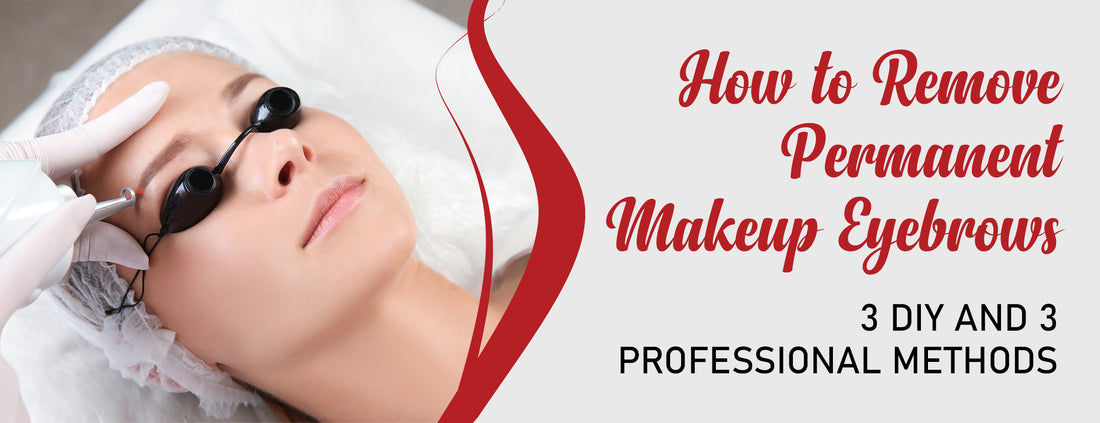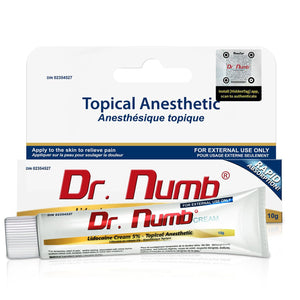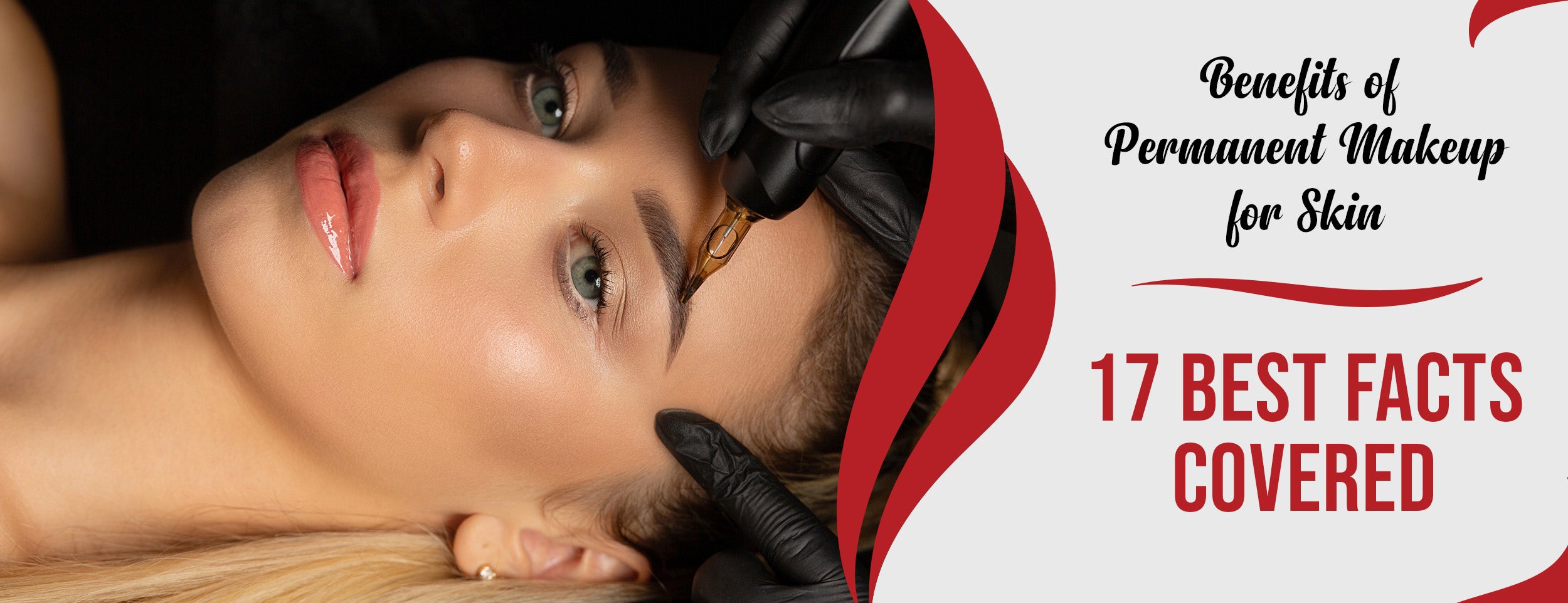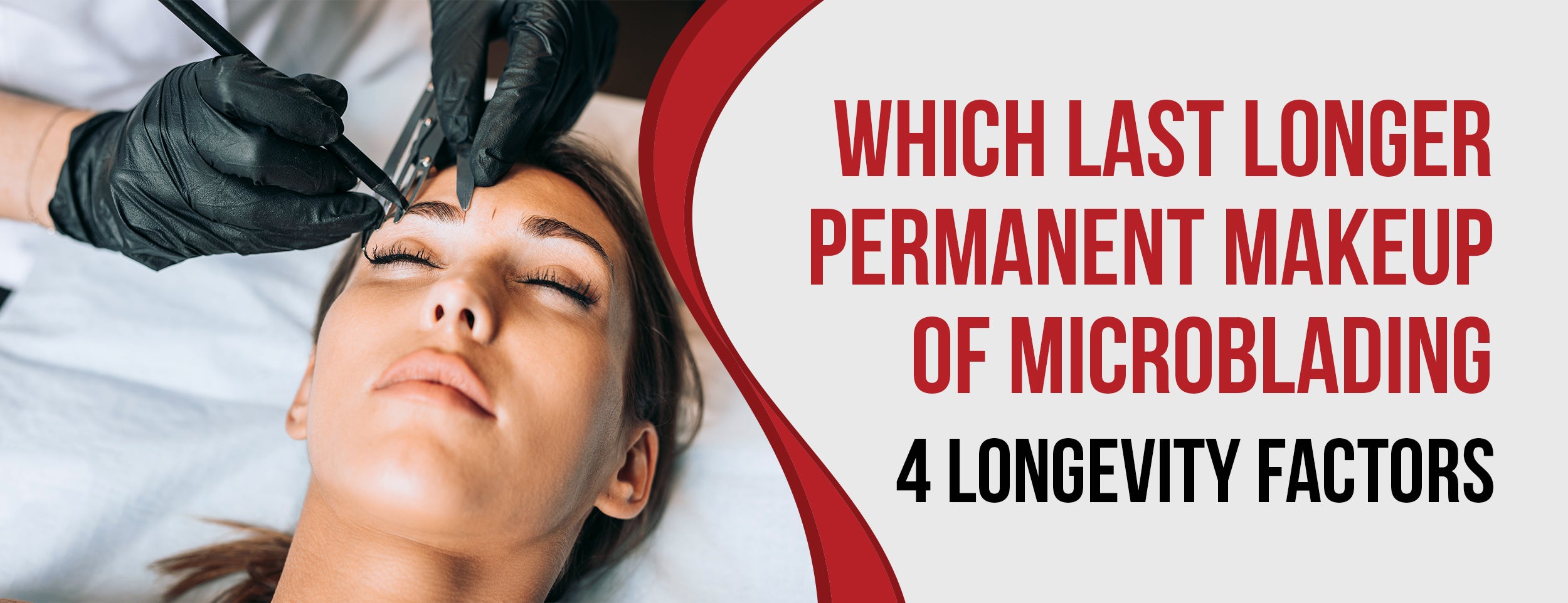Do you want your permanent makeup eyebrows to align with your preferences or needs? Whether it's due to a change in taste or disappointing results. Surprisingly, there are solutions to bid farewell to permanent makeup. You have the choice between DIY removal or seeking professional assistance.
Salt is commonly used to remove permanent eyebrows, and there are two methods to achieve this. One method involves applying salt topically to the epidermis, while the other involves gently exfoliating the skin to eliminate the permanent makeup.
This comprehensive guide will delve into permanent makeup removal, specifically focusing on eyebrows and other forms of eye makeup. We will explore various removal options, consider safety, and more. Let us embark on this journey to discover the world of permanent makeup removal!
How to Remove Permanent Makeup Eyebrows: A Guide

Eyebrows are a highly sought-after area for permanent makeup. They can enhance your facial features, frame your eyes, and convey emotions. Over time, eyebrow trends may change, causing you to dislike the shape, color, or style of your permanent eyebrows.
Additionally, issues like fading, blurring, or infection can arise with your eyebrow tattoo. Regardless, you may want to remove your permanent eyebrows and start anew.
Two primary methods to remove permanent eyebrows are at-home removal or seeking professional assistance. Each option presents its advantages and disadvantages, necessitating careful consideration before deciding.
Permanent Makeup Removal at Home: 3 DIY Methods
While removing permanent makeup at home may be tempting for some due to its affordability, convenience, and non-invasiveness compared to seeking professional removal services, it is crucial to acknowledge that this approach is less effective, riskier, and more time-consuming. If you are still determined to try it, here are a few home methods you can consider.
- Salt scrub: This method involves gently rubbing salt on your eyebrows to exfoliate the skin and remove pigment. Mix salt with water or oil, then apply the mixture to your eyebrows using a cotton ball or toothbrush. After scrubbing gently for about 30 minutes, rinse with water. Repeat this process daily for several weeks or months until you notice results.
- Aloe vera gel: To soothe the skin and fade the pigment of your eyebrows, try applying aloe vera gel. You can get fresh gel from a leaf or buy a pure gel from a store. Apply it twice daily on your eyebrows, leaving it on for 20 minutes before washing it off. Keep doing this for a few months until you start seeing results.
- Lemon juice: Use lemon juice to bleach and lighten eyebrow skin. Apply fresh or bottled juice with a cotton ball daily, leaving it on for 15 minutes before rinsing. Protect your skin from sun exposure due to increased sensitivity. Be consistent for several months until the desired results are achieved.
These methods are natural and inexpensive but also slow and could be more dependable. They may not work for everyone or every type of pigment. They may also cause skin irritation, swelling, infection, or scarring. They could even harm your natural eyebrows or eyelashes if you're not careful.
We suggest checking with your doctor or dermatologist before trying these methods. They can guide you on using them safely and effectively, or they may recommend other options.
Professional Removal Procedures

Professional removal methods are pricier, trickier, and more invasive than home remedies. They are also more efficient, dependable, and regulated. Professionals can effectively eliminate various pigments in fewer sessions with minimal harm to your skin. Here are some techniques they employ.
Laser Removal
This method uses a high-intensity laser beam to break down the pigments in your skin. The laser targets the pigments without harming the surrounding tissue. Your body's immune system then absorbs and eliminates the pigments naturally. Before the procedure, a certified laser technician will assess your skin type, pigment type, and medical history.
Wear protective eyewear during the procedure to avoid potential damage to your eyesight. You may experience heat or discomfort as the laser pulses on your skin. The sessions required may vary depending on the pigments' depth, density, and color.
Saline Removal
This method involves using a saline solution to dissolve and remove tattoo pigment from your skin. The saline solution is a mixture of salt and water, similar to the fluids in your body. It is injected into the same area where the pigment was deposited using a tattoo machine or a microblading tool. The saline solution causes a scab on your skin containing the pigment.
After a few days, the scab falls off, taking the pigment with it. A trained permanent makeup artist or tattoo artist should perform the procedure. You may experience discomfort or pressure during the procedure as the saline solution is injected into your skin. The number of sessions required will depend on the amount and quality of the pigment.

Glycolic Acid Removal
This method involves using a special solution called glycolic acid on your skin to remove pigment and the top layer of the skin. Glycolic acid is a chemical that helps exfoliate your skin and promote new skin growth. The solution is applied using a cotton swab or brush on your eyebrows. It is left on your skin for a few minutes before being washed off.
During the procedure, your skin may blister and peel off, revealing fresh skin underneath. To have this procedure done, you should visit a licensed esthetician or dermatologist. You might feel slightly burning or stinging as the glycolic acid works on your skin. The number of sessions you'll need depends on the depth and color of your pigment.
These methods are more advanced and effective than home remedies but also have downsides. They can be expensive, ranging from $100 to $700 per session. They can also cause side effects like redness, swelling, blistering, scarring, infection, or changes in skin color. They can also require some downtime and aftercare for proper healing and recovery.
So, we recommend these methods only if you're serious about removing your permanent makeup and have researched and consulted beforehand. They may give you better results and satisfaction in the long run.
Removal of Permanent Eyebrow Makeup
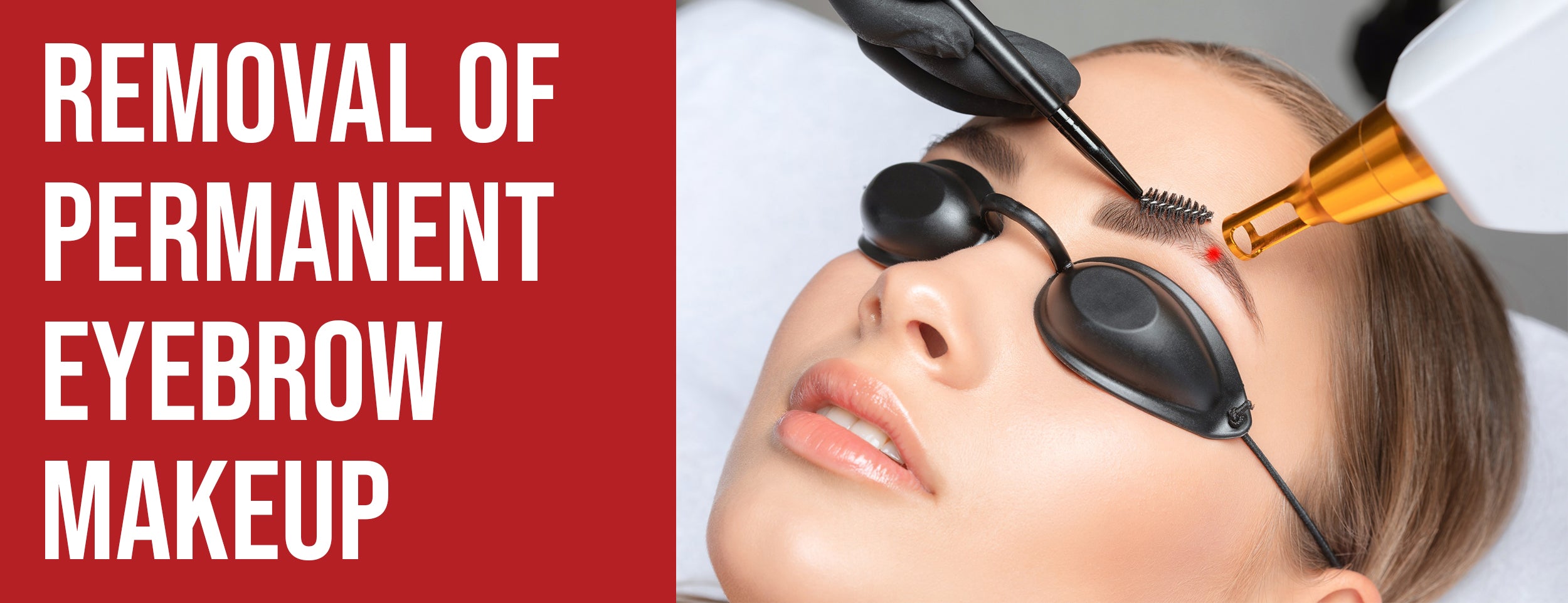
Many want to remove their permanent eyebrow makeup for various reasons. Here are some common ones:
- You don't like your eyebrows' shape, color, or style.
- Your eyebrows have faded, blurred, or changed color over time.
- Your eyebrows don't match your natural hair color or skin tone.
- Your eyebrows don't suit your current fashion or personal preferences.
- Your eyebrows have caused complications like infections, allergic reactions, or scarring.
You have two main options to remove permanent eyebrows: laser removal or saline removal.
- Laser removal effectively removes dark or dense pigments, like black or brown. It breaks down most pigments quickly and causes little skin damage. It can be more expensive, painful, and risky. It may also cause pigment changes, like lightening or darkening of the skin.
- Saline removal effectively removes light or sparse pigments, like red or blonde. It dissolves most pigments in fewer sessions with less pain than laser removal. It may be less effective, time-consuming, and messy. It may also cause scarring or infection on the skin.
Both methods require multiple sessions and healing time between sessions. Following proper aftercare is crucial for optimal results and fewer complications.

Permanent Eyeliner Makeup Removal
Permanent eyeliner makeup is a widely sought-after form of permanent makeup that some people want to remove. There are several reasons why you may want to take off your permanent eyeliner, such as:
- If you're unhappy with how thick, long, or shaped your eyeliner is.
- If your eyeliner has faded, smudged, or changed color over time.
- If your eyeliner doesn't match your eye shape or color.
- If your eyeliner doesn't match your current makeup style or personal preferences.
- If your eyeliner has caused infection, allergic reaction, or damage to your eyelids.
When it comes to removing permanent eyeliner, laser removal is the only safe and effective method. It can precisely target the pigment without harming the surrounding tissue or affecting your eyesight. Laser removal can remove most pigments in fewer sessions and with minimal damage to your skin.
It's important to remember that laser removal can be expensive, painful, and risky. Prices can go up to $500 for each session, depending on the amount and area of pigment that needs to be removed. You may also experience discomfort during and after the procedure because of the laser pulses in your sensitive eye area.
In addition, there are potential complications like inflammation, blistering, scarring, infection, and pigment changes. Proper downtime and aftercare are necessary to ensure proper healing and recovery.
Considering these factors, we recommend laser removal only if you're certain about removing your permanent eyeliner and have consulted with a qualified laser technician beforehand. They can provide you with a thorough assessment and a personalized treatment plan.
Dealing with Semi-Permanent Eyelashes
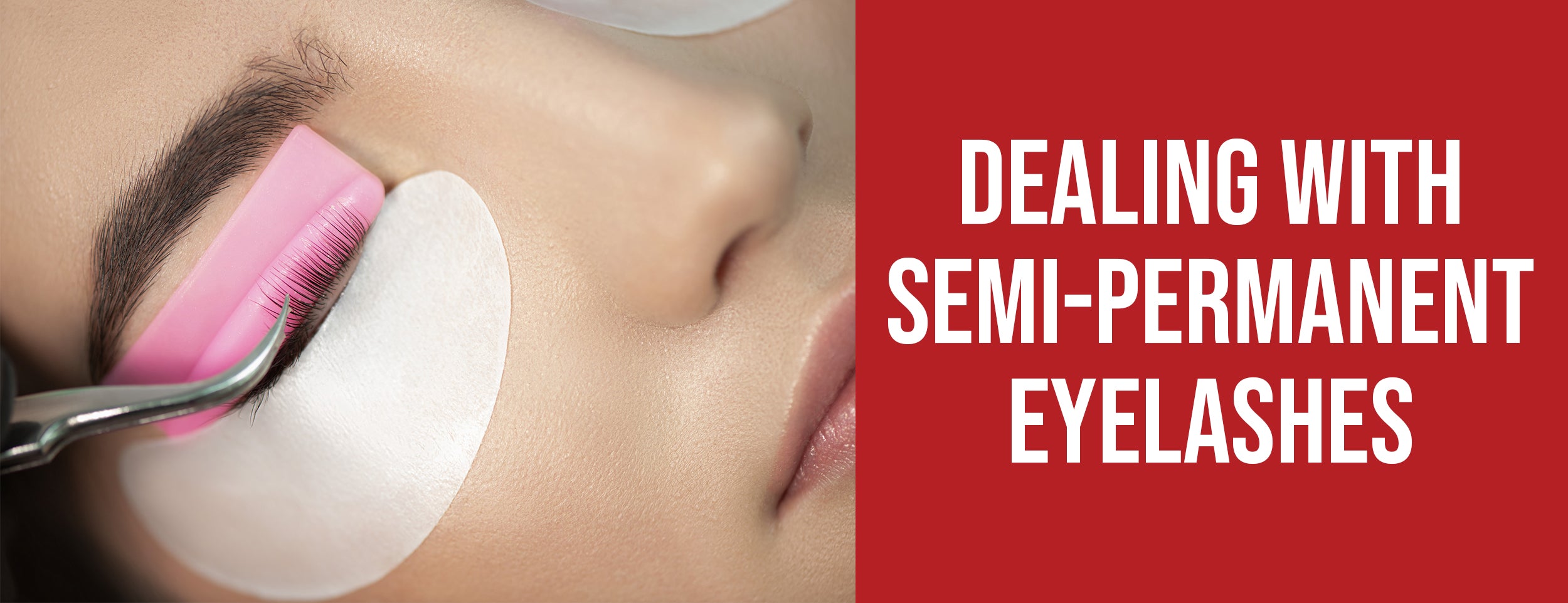
Semi-permanent eyelashes are not technically permanent makeup but are often used with permanent eyeliner. They are synthetic or natural fibers attached to your natural eyelashes using special glue. They can make your lashes look fuller, longer, and more glamorous.
It's important to know that semi-permanent eyelashes are not meant to last forever. They usually fall off gradually within two to four weeks as your natural eyelashes shed. Also, there are some potential problems that you should be aware of:
- Irritation, inflammation, or infection of your eyes or eyelids
- Allergic reaction to the glue or fibers
- Damage or loss of your natural eyelashes
- Difficulty applying or removing regular makeup
If you want to remove your semi-permanent eyelashes, you have two options: doing it at home or seeking professional help.
Removing semi-permanent eyelashes at home is a simple and affordable option. You can use an oil-based makeup remover or lash glue remover to dissolve the glue and gently slide off the lashes. Steam or warm water can help loosen the glue as well. Just be cautious not to pull on your natural lashes too hard, as it can cause damage.
On the other hand, seeking professional help for removing semi-permanent eyelashes is a safer and more comfortable option. A lash technician will use a special solvent and tools to remove the lashes without harming your natural lashes. They can also guide eyelash care after the removal.
Both methods are quick and easy, but there are a few things to consider. Home removal of semi-permanent eyelashes may cause irritation or infection if you must be hygienic and gentle enough. Professional removal may cost $10 to $50, depending on the salon and the service.
Therefore, we recommend removing semi-permanent eyelashes that look sparse, uneven, or unnatural. You can choose the method that fits your budget and convenience.

Removing Semi-Permanent Eyebrow Makeup
Semi-permanent eyebrow makeup has gained popularity recently, also known as microblading or microshading. It involves using a handheld tool with fine needles to create realistic hair-like strokes or powder-like effects by depositing pigments into the upper layer of the skin. This type of makeup can last up to two years.
It's important to note that semi-permanent eyebrow makeup is not permanent. It can fade, change color, or blur over time due to sun exposure, skin type, lifestyle, or how well it's maintained. In some cases, it can also cause complications like infections, allergic reactions, scarring, or dissatisfaction.
If you remove your semi-permanent eyebrow makeup, glycolic acid removal is one of the main options. This method is the most effective and involves peeling off the top layer of skin and the pigment. It typically requires fewer sessions and causes less pain than laser or saline removal. Additionally, glycolic acid removal can stimulate new skin growth and improve the texture and appearance of your skin.
It's worth noting that glycolic acid removal can be costly, ranging from $150 to $300 per session, depending on the area and amount of pigment to be removed. Side effects may also include pain, swelling, blistering, scarring, infection, or pigment changes. Proper aftercare and downtime are necessary for healing and recovery.
Therefore, we strongly recommend consulting a licensed esthetician or dermatologist before considering glycolic acid removal. They can provide a detailed assessment and create a customized treatment plan tailored to your needs.
Removing Permanent Eye Makeup: Other Considerations

Taking off permanent eye makeup is a complex process. It needs planning, preparation, and careful execution. There are also some risks, costs, and consequences involved. So, before deciding to remove your permanent eye makeup, consider these factors:
- Your expectations: Have realistic and reasonable expectations. Don't expect to get back your original look or achieve perfection. Be prepared for some imperfections like unevenness, discoloration, or scarring. Patience and persistence are key, as removal may take multiple sessions and several months.
- Your alternatives: Explore other options like covering it up, correcting it, or enhancing it. Use regular makeup products like concealer, foundation, powder, or eyeshadow to hide your permanent eye makeup. Temporary tattoos or stickers can be used to create different eye looks. You can also visit a permanent makeup artist for adjustments or improvements.
- Your motivation: Reflect on why you want to remove permanent eye makeup and what you hope to gain from it. Consider the impact on your self-esteem, confidence, and happiness. Ensure you do it for yourself and not for others' approval.
Considering these factors, you can better decide on removal and avoid future regrets or disappointments.
Conclusion
Permanent eye makeup is a cosmetic procedure that can enhance your appearance and save you time and money. However, it can fade, change, or cause problems over time. If you want to remove it, you have several options like home remedies or professional procedures. Each option has pros and cons, so consider them carefully before deciding.
This article provides helpful information on removing permanent eye makeup for eyebrows, eyeliner, and eyelashes, along with tips and answers to common questions. Remember, it's not a simple process and involves risks and costs. Consult a professional for advice.

